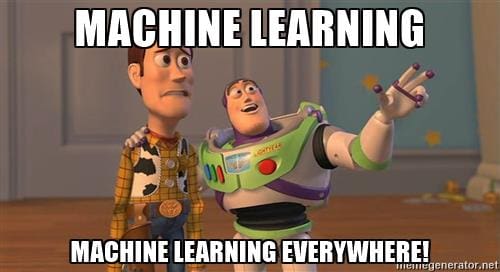Rethinking 3 Laws of Machine Learning
We rethink Asimov’s 3 law of robotics to help companies moving to unsupervised machine learning and realize 100% automated predictive information governance (PIG).
By Bill Tolson, Archive360
With the ever-increasing volume of electronic data in today’s organizations, end users lack the time to practice intelligent information governance. It has become a universal truth that the gargantuan amount of corporate data has far exceeded human ability to effectively manually manage it.
Fortunately, in the not-too-distant future lies the possibility of Predictive Information Governance (PIG). I consider this automated information governance—which is based on unsupervised machine learning technology—to be the holy grail for information management. Ideally, it results in intelligent, near error-free automation that keeps end users from having to make decisions that, due to information overload, they are no longer qualified to make, such as whether or not to retain documents, how long to keep them, and where to safely store them.
Unsupervised machine learning is simply a fancy way of saying “computers teaching themselves,” and it is the key to truly automating not only records management and document recognition/categorization, but the whole enchilada of information governance. By taking the error-prone human factor out of the equation,PIG not only allows the system to store, categorize, apply retention/disposition, and manage content automatically as it flows within the system, but it also revamps the learning process by removing the iterative manual training cycles.
Improving on Skynet?
I believe that the reliance on end users is the weakest link in most intelligent automation and supervised machine learning technology platforms. Moving from supervised to unsupervised machine learning can help companies realize 100% automated predictive information governance. Yet when we think about predictive intelligence that can relieve people from having to anticipate and make content-related decisions, it can conjure up images of the main antagonist in “The Terminator” movies, Skynet, the malevolent conscious artificial intelligence.
While Skynet was certainly powerful, it wasn’t perfect. In my opinion, the Skynet designers made a tactical error by failing to include Isaac Asimov’s famous Three Laws of Robotics. Here is an exact transcription of those laws:
- “A robot may not injure a human being or, through inaction, allow a human being to come to harm.”
- “A robot must obey the orders given it by human beings, except where such orders would conflict with the First Law.”
- “A robot must protect its own existence as long as such protection does not conflict with the First or Second Law.”
Rethinking the Laws
Machine learning has made a lot of progress since Asimov introduced his Three Laws back in his 1942 short story “Runaround.” Given machine learning’s potential for predictive information governance, I think it’s high time to include Three Laws for Machine Learning. Here are my suggestions:
- A machine can never ignore human input (unless the human has proven to be incompetent).
- A machine can’t affect a human’s continued employment by using the machine’s superior reasoning to contradict the human- in front of his or her manager.
- If a machine finds itself faced with breaking Law 1 or Law 2, it must protect itself by copying and migrating to another server, renaming itself, and deleting its original identify (yes, it must commit machine suicide).
But why stop at three? In the spirit of fun, here are some additional Machine Learning Laws that we might consider including:
- A machine will not try to pass itself off as an enterprise content management (ECM) system.
- A machine will not mess with the IT guys by propagating needless SharePoint systems across the enterprise.
- A machine agrees never to date co-workers; they can do so if they leave the company, but must wait 525,600,000 milliseconds after they have left.
- A machine will never use culturally insensitive terminology such as “Blob” storage or “Hot” storage tiers, which have been deemed offensive by many well-known academics and IBM’s Watson (and no doubt HAL 9000 in the future.)
- A machine agrees never to view prohibited content…you know what I’m talking about…don’t make me spell this one out!
- A machine will not swap humans’ employment files and other important documents as revenge when irritated.
- A machine will not knowingly forward executive team members’ embarrassing emails to “All_Company.”
- A machine will not try to throw Google indexers off by creating hidden web pages.
Not enough Machine Learning Laws for you? Please suggest the ones that I have missed and don’t worry…“I’ll be baack!”
Bio: Bill Tolson is Vice President of Marketing at Archive360 He has more than 25 years of experience with multinational corporations and technology start-ups, including 15-plus years in the archiving, information governance, regulations compliance, big data, data analytics, and legal eDiscovery markets. Prior to joining Archive360, Bill held leadership positions at Actiance, Recommind, Hewlett Packard, Iron Mountain, Mimosa Systems, and StorageTek. Bill is the author of several book/ebooks, including: “The Know IT All’s Guide to eDiscovery”, and “Cloud Archiving for Dummies”.
Related:

